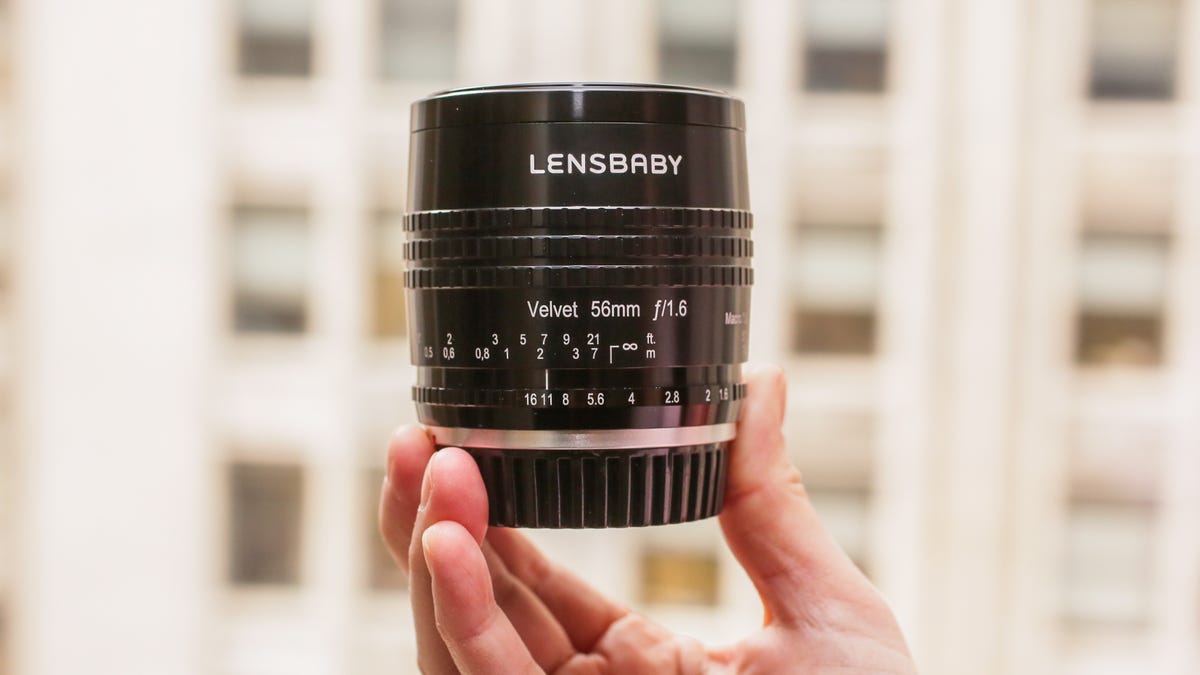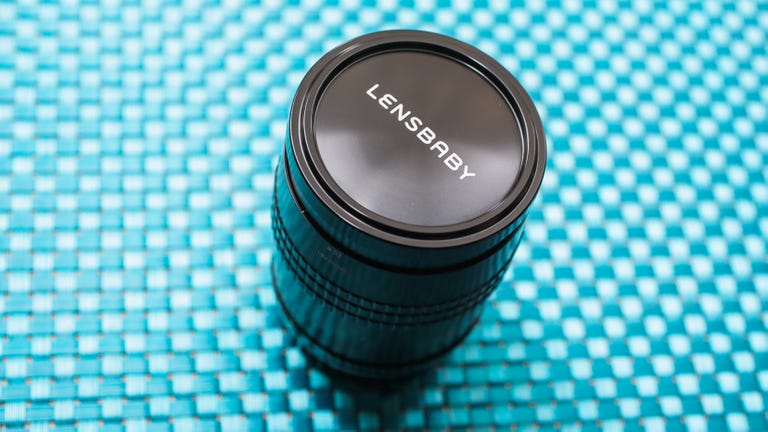 Why You Can Trust CNET
Why You Can Trust CNET Lensbaby Velvet 56 review: Dreamy or bold, this lens has it covered
Bringing a subtle but stylish difference to a fast 56mm prime lens, the Lensbaby Velvet 56 is a great addition to your bag.
Lensbaby, a company known for its special-effects lenses, such as selective focus and fisheye models, gets a little more serious with its new Velvet 56, a 56mm f1.6 manual-focus macro lens that produces a bit more stylistic look than other standard macro lenses.
The Good
The Bad
The Bottom Line
The Velvet 56 will be available for $500 in Canon, Nikon, Sony A and Pentax mounts in mid-April; there will also be a $600 Velvet SE version in silver. Mirrorless Micro Four Thirds, Sony E, Samsung NX and Fuji X mount versions will follow in May. Directly converted, those are £335 and AU$655.
The lens is very nicely constructed. It's completely metal with a clicky aperture ring on the body side. Apertures run from f1.6 - f16 in whole stops (except for the first step, which is 2/3 of a stop). There's also a knurled, strongly dampened focusing ring. The distance range runs from 5 in/13cm, the closest it's able to focus from the front element, up to 21 ft/7m before making the jump to infinity; a full rotation of the lens takes it to 12 in/0.3 m.

On one hand, the long rotation makes it easy (and necessary) to get very granular focus adjustments at small distances. However, it also means that from beginning to end requires 1.5 rotations, which can be frustrating if you accidentally turn the lens the wrong direction while you're getting used to it.
Since it doesn't use internal focus, the lens extends from its minimum 3.4in/86mmlong to 4.4in/112mm heading from infinity to close up. The mirrorless-mount versions are even bigger, starting at 3.7in/94mm and reaching 4.7in/120mm long. Macro magnification is 2x, and all the versions take a 62mm filter. The dSLR version weighs 14.4oz/408g with both caps. The version for mirrorless ILCs will include a metal lens hood as well.
While it's not a traditional Lensbaby selective-focus lens, the out-of-focus areas do have the same look as one of those lenses sans tilt. Wide-open shots that aren't quite properly focused display a very interesting glow at 100 percent, and close-ups have a very attractive soft-focus look. Narrower apertures produce reasonably sharp in-focus areas. And there's surprisingly little fringing.
Because of the seriously shallow depth of field at 56mm -- on a full-frame camera, at 10 inches you've got a whole 0.06 in to play with at f1.6, which increases a little to 0.4 in on a camera with an APS-C-size sensor -- for macro shooting you'll probably want to stick to f4 or narrower. (This is physics, not the lens.) That's plenty shallow.
Conclusion
It took a little getting used to, but once I did I fell in love with the Velvet 56. For a Lensbaby, which tends to run at most about $300 (£280, AU$475), the Velvet 56 enters new territory. Though it's still not a traditional lens, it's on the expensive side for enthusiasts; a typical 50mm macro runs less than $400, though those lenses tend to have less attractive bokeh than more expensive models. But the Velvet 56 is an elegantly constructed lens that's fun and creative to use for adding a little difference to portrait, product, street and similar standard-lens photography.


